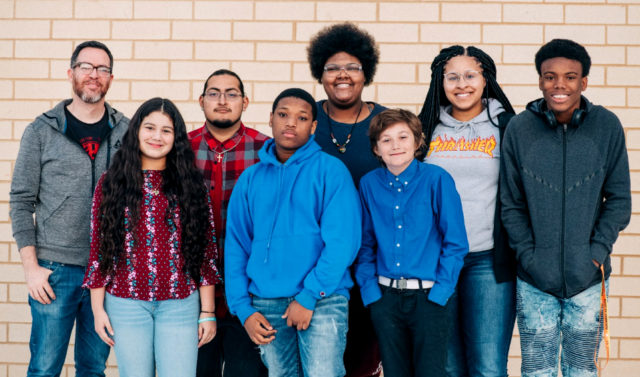According to a 2017 Gallup Student Poll, more than half of students say they are not engaged in the classroom.
But what would happen if we put students at the center of an active redesigning of school? What if we empowered young people directly to reconsider every single aspect at school and help to design its courses and curriculum? Milestone Democratic School, a new, independent, free, public charter school that will launch at the end of the month, believes that they have the answer to these questions.
“It’s easy to say what’s wrong with schools today. What’s more challenging is to develop more solutions and to try things that are radically different because we all recognize that we needed a radical difference,” says Sean Anderson, who has helped to create Milestone Democratic School for students grades 7-12.
Milestone has been designed by youth – the majority of them African American and Latino – for youth. Milestone Democratic School’s youth design team, made up of students ages 12-20, makes all decisions about what the school will be like in terms of curriculum and courses and is diverse and representative of the communities they seek to serve.
Gersely Rios, 15, is a member of Milestone’s youth design team and says that she is excited about the possibilities of the new school.
“Sean [Anderson] and the advisors helped to teach us the process of how to build the school and we went over the proposals,’ Gersely, who is also vice president of the school’s governance board, tells Madison365. “There were things that we had to learn and we really started to figure out what we wanted the school to be like. We developed our Possibilities Statement: Where learning is engaging, where everyone has a voice, all voices are heard, and where the most important step is the next one…
“We had to make a decision on how the school was going to be governed. We designed the facility and the learning programs, the calendar, and the schedule. Everything,” she adds. “All by young people. The youngest in our group was 12 at the time and the oldest was 20.”
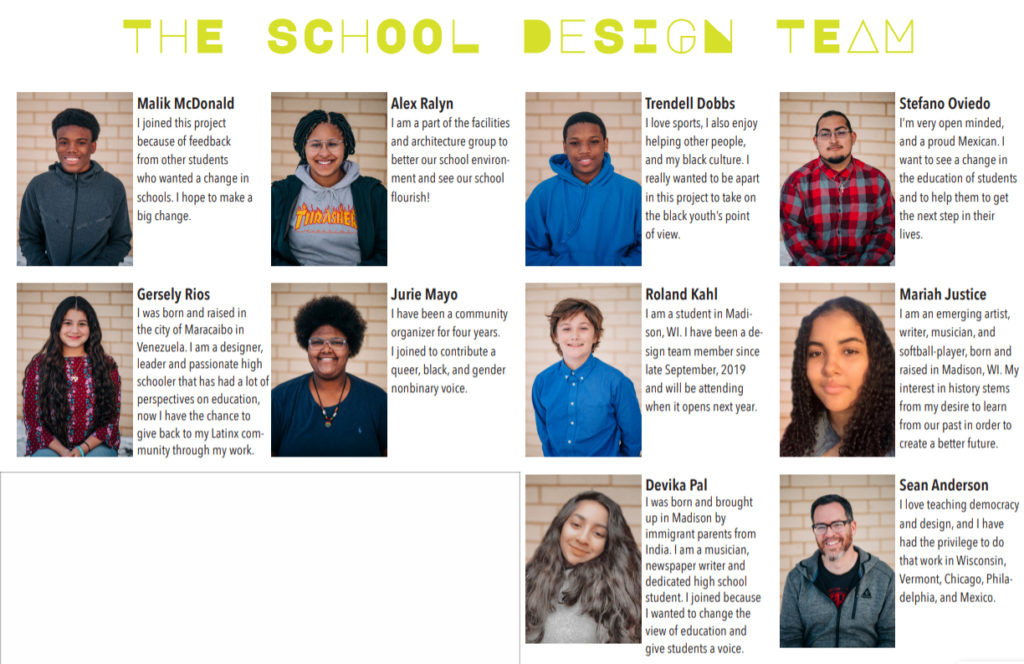
The Milestone Youth Design Team, who have been working together since 2018, also did quite a bit of research, both online and in-person.
“We visited Escuela Verde in Milwaukee. They do a lot of natural learning and also project-based learning. They don’t have grades. It’s probably the most similar to what Milestone will be like,” Gersely says. “We also visited Avalon School in the Twin Cities [St. Paul]. We are going to visit schools in Colorado and Rhode Island. We visited Clark Street Community School in Middleton. We’ve done quite a bit of research. The design team took a lot of ideas from community stakeholders and held interviews and listening sessions.
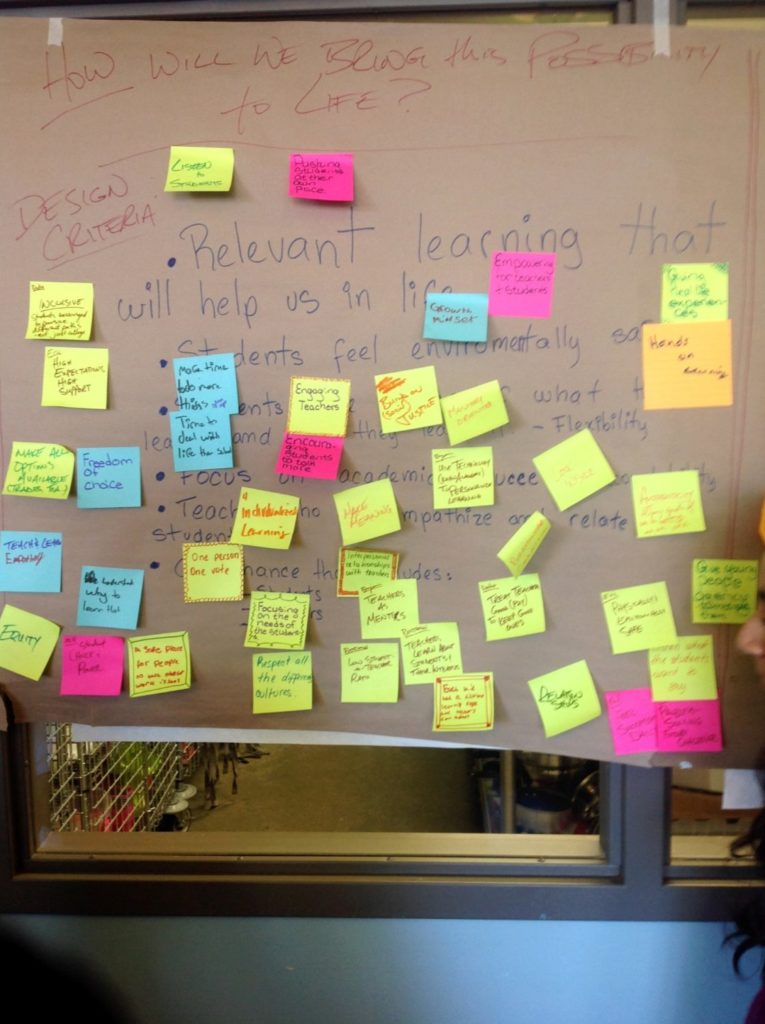
“From there, the design team figured out what would work best for Milestone. There are many things that created and inspired Milestone,” she continues. “But I don’t think that there is anything at the state level or national level like Milestone. I think the idea is very fresh and very new. I think we have something wonderful here and I would love to see the brand grow – the idea of school – and engage more students around the world.”
Milestone received approval from the UW System’s Office of Educational Opportunity in 2019 to open. It will be Madison’s third independent charter along with Isthmus Montessori Academy and One City Schools. Milestone got a boost from an $800,000 federal implementation grant through the Wisconsin Department of Public Instruction that has helped with the start-up costs.
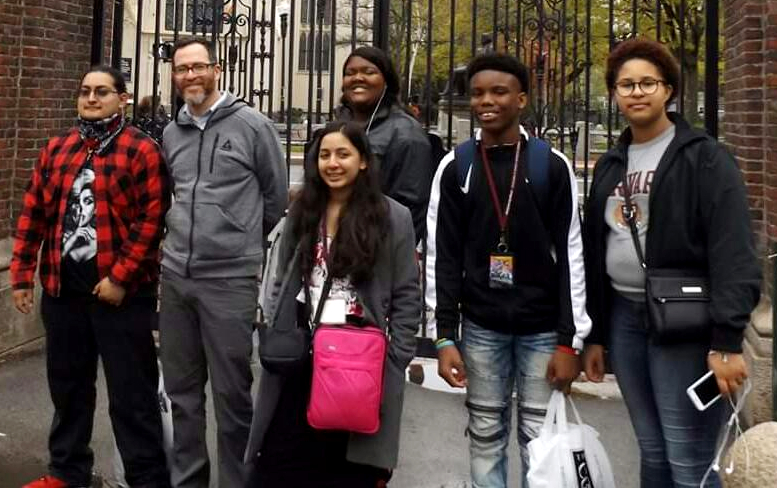
“The whole thing got off the ground because I and a fellow teacher that I was friends with started having conversations 5-6 years ago about what we saw where the major issues and concerns around schooling,” Anderson says. “As a classroom teacher, a lot of the day-to-day experience was struggling with and acknowledging that students were not excited to be at school. They did not like school; they did not want to be there.
“And all of the quote-unquote ‘good teachers’ that we knew were doing these dog-and-pony shows and tricks or this whole thing called ‘teach like a pirate’ that was going on for a while,” Anderson adds. “There was a feeling that you just got to be craaazy in your classroom and make learning fun.”
What Anderson and friends were realizing is that it all was just kind of window dressing for the main issue of school – students didn’t really care about school in large part because they have no say in what happens there.
“This is true for all students, but we especially noticed that it is more true for some students than others. That’s where equity issues at school come up,” Anderson says. “It’s hard enough to get interested in school if you’re a member of the dominant culture that the school was set up for and by. But if your somebody who is outside of that dominant culture – you’re a non-White, non-native English speaker, non-cis, hetero-type person – all of that disengagement is just compounded by the fact that you don’t see yourself reflected in your school and your experience whatsoever.”

Anderson, who has been a teacher at Edgerton Middle School, started testing it out in his very traditional middle school classroom.
“It started working wonders. Not only did I see a dramatic increase in student engagement but I saw that especially among those quote-unquote ‘educationally disadvantaged’ students,” Anderson says. “My colleague and I were amazed. We thought, ‘Wouldn’t it be amazing if we could do a whole school in this format and not just one little classroom?’”
Their immediate next thought was ‘nobody is going to let us do this.’
In 2017, Anderson and his colleague were introduced to a man who was running the Office of Educational Opportunity at UW and they started talking about starting an independent charter.
“The very first time we described the idea to him,” Anderson remembers, “he said, ‘Yes! Go! Do it!’”
Gersely, who was born and raised in the city of Maracaibo, Venezuela, and joined this project when she was 13, was really excited to get on board with the prospects of a new kind of school.
“When I first came here I didn’t really like school, but now I have the opportunity to make things better,” says Gersely, who is also in the UW-Madison PEOPLE Program. “At first, it was curiosity, but I’ve really grown and bonded with the Design Team and we’ve become friends. For us, it’s a happy feeling that we are actually making change.”
Art Richardson, one of Milestone’s three advisers, was the high school manager at the Goodman Community Center when he met Anderson at a breakout session at a Dane County Youth Voice Conference.
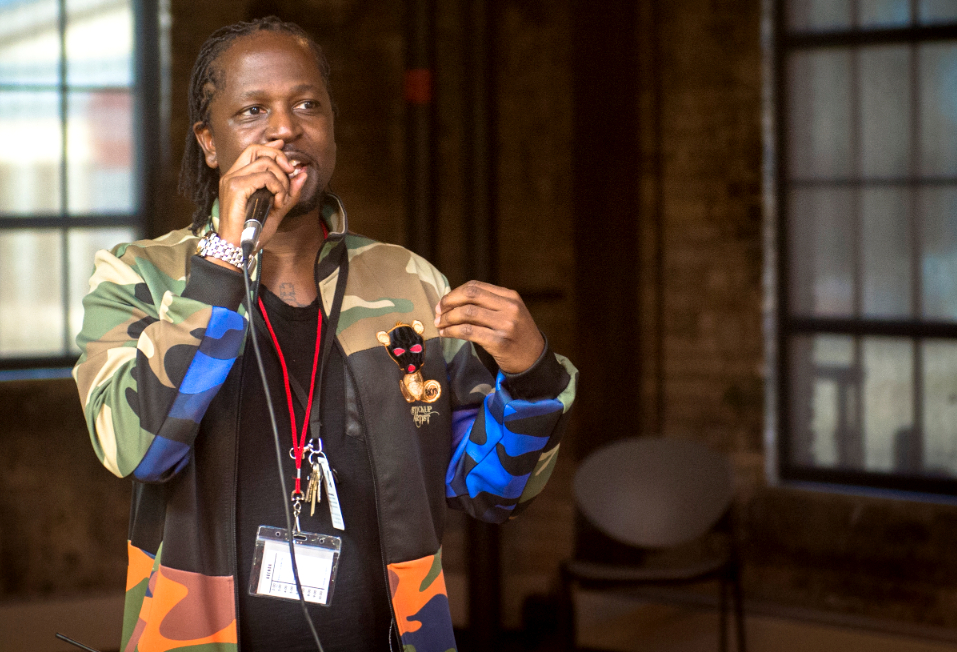
“There was a large group of young African-American men speaking about their experiences in the MMSD in the group. I said some very passionate things about MMSD,” Richardson remembers. “Towards the end, Sean introduced himself and started talking about Milestone and gave me his business card.”
The two stayed in touch and a few months later Richardson was interviewed by the Design Team to be an advisor.
“I gravitated right to the mission and the model of the school and I joined the team. Here I am today, super-excited about what we’re building,” Richardson says.
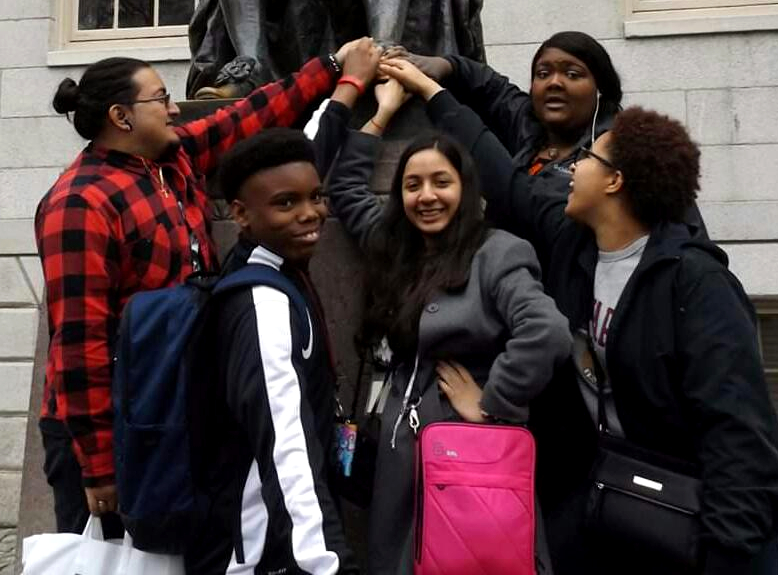
Richardson sees Milestone Democratic School as an opportunity to lessen Madison’s infamous racial disparities in education.
“When it comes to racial disparities and all of the things we’re not getting right in the Madison schools, I just feel very passionate and very strong about whether students are having a strong sense of identity and are being in a culture where they feel empowered,” Richardson says. “We know that for so long people of color have been marginalized and the brutality and the things that we have been through. I just don’t want to be anywhere near that and our youth don’t deserve that.
“Our students deserve the best. They deserve something that is cutting edge. I love this school because of the possibilities,” he continues. “Our schools are too antiquated. It’s unfathomable to think that we would continue on this road that is not working for so many people.”
One thing that will be unique about Milestone Democratic School is that students will be designing their own learning plans with an advisor, developing their own projects, and connecting with their communities through internships.
Another very unique thing at Milestone School is that they will not have letter grades.
“A-B-C-D grades don’t really define the whole process and the whole actual learning that a student does,” Gersely says. “It really does give you quite a bit of anxiety to get a good grade. It doesn’t make learning engaging. I don’t think it’s a good system.”
“We really wanted to take the idea of school back down to the ground and if we were creating a place with the three big goals – learning is engaging, everyone has a voice and all voices are heard and the most important step is the next one – we realized that the traditional grading system is in direct contradiction to all three of those goals,” Anderson adds. “There’s a lot of academic research around the fact that grades do the opposite of what they claim to do or what us teachers think they do. They don’t actually inspire engagement and motivation. Instead, by creating this transactional relationship between teachers and students, it actively decreases interest in the learning material and what they are engaged with.”
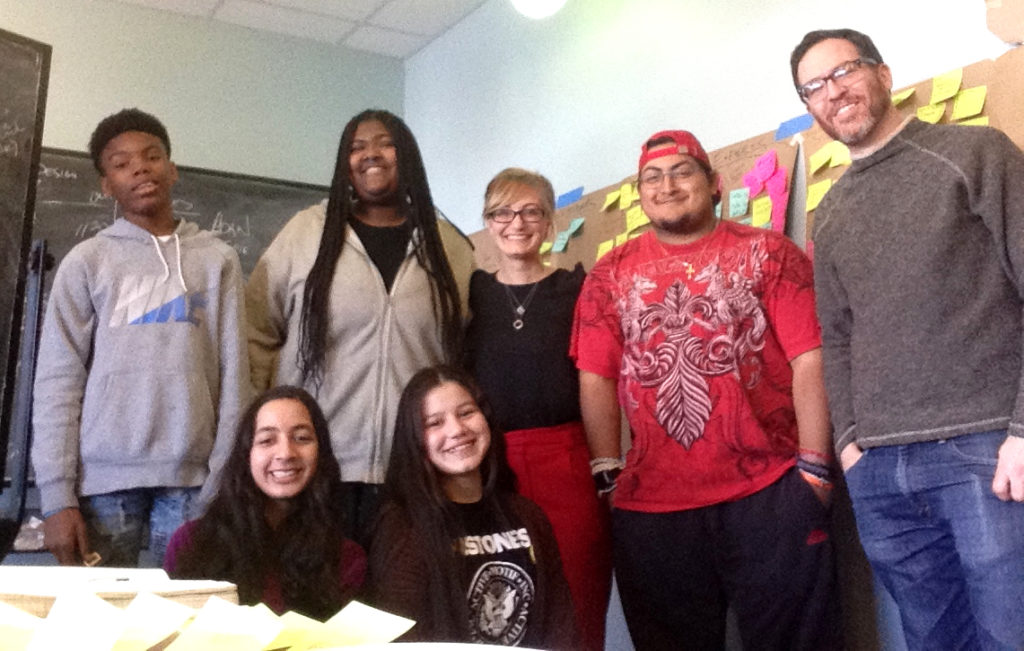
There are so many students, Anderson says, who have one or two bad experiences or in a bad situation in their life and going through a rough time and that can severely affect their grades.
“That grade book and that transcript can be just something that holds people back. From an equity perspective, it’s not equally applied,” Anderson says. “Some kids do fine recovering from challenges and hurdles. For a lot of kids, once you get into that bad situation, it is next to impossible to build yourself out of it. We want to make sure that every time you walk into Milestone, we’re worried about where you are right now and where you want to get to and how do we get you there.”
Milestone will use the Mastery Transcript Consortium, a transcription system that focuses on student achievement and accomplishment and not on grades and GPAs. “Basically what we’ve adopted is a series of learning goals and each learning goal is made up of a list of competencies – things we are asking students to learn while they are at Milestone,” Anderson says. “Those make up our graduation requirements.
“What our transcripts are going to show is that each student has achieved mastery of those competencies and it will give us an opportunity to document it with a portfolio of work,” he adds.
Milestone is not only a member of the aforementioned Mastery Transcript Consortium, but also the Big Picture Learning Network of Schools and the Diverse Charter School Coalition which focuses on building intentionally diverse student bodies and staffs.
“We’re part of three national and international networks of schools all of which we borrow ideas from and all of which are giving us support,” Anderson says. “But I agree with Gersely, there are places that do things similar to Milestone, but I think we have a very unique model that we’re putting together.”
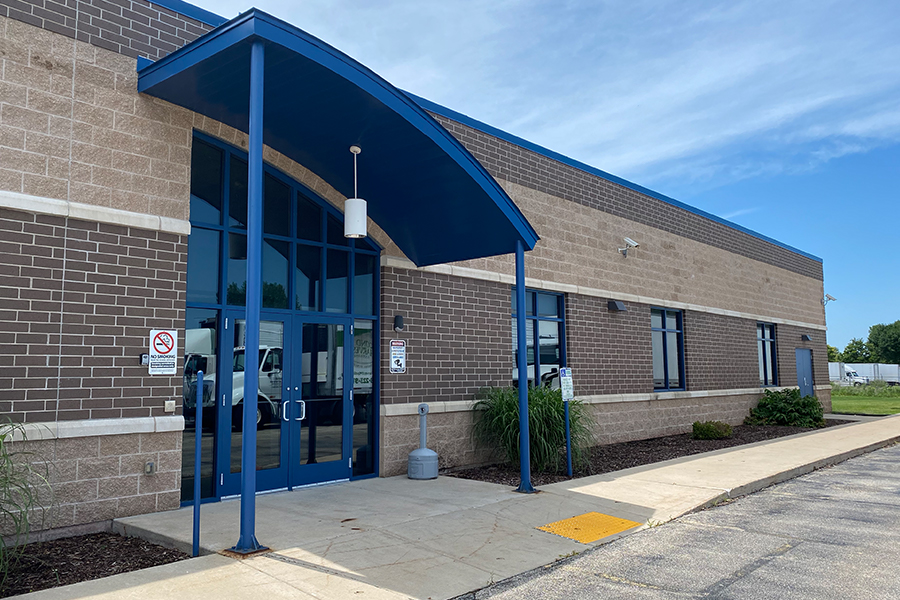
Milestone Democratic School will be located on 2758 Dairy Drive on Madison’s east side in a building that used to house the Madison Media Institute. Due to the COVID-19 pandemic, the Educators’ Cooperative of Milestone is planning to start the 2020-21 school year with Personalized Remote Learning, where students will still be able to meet face-to-face with their advisors regularly but will do the majority of their learning from home.
For 2020-21, Milestone is seeking a minimum enrollment of 30 students and a maximum of 64. The first day of school is Aug. 27.
“Our goal is to have 64 youth on day one, so right now we are beating the pavement to enroll more youths from 7th-12th grade,” Richardson says. “We’re really trying to become visible because the more visible we are, the more youth that will find out about us.
“Somebody has to really be ready for the change. We have to get out of the madness,” Richardson adds. “Why would we keep doing things that don’t work? It doesn’t make sense. This school – I’m all in. I’m ready for our students to experience something that they can get excited about.”

























